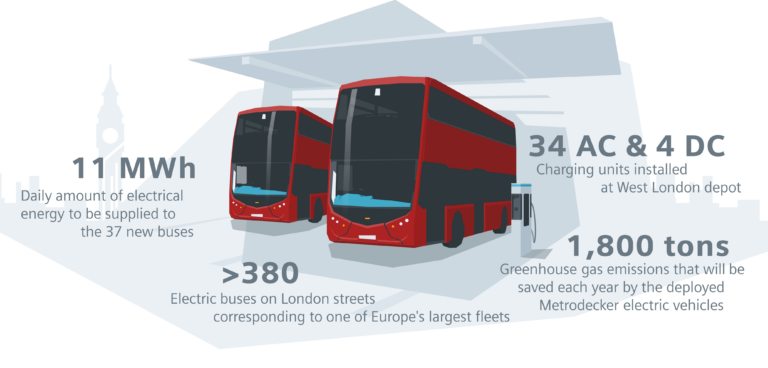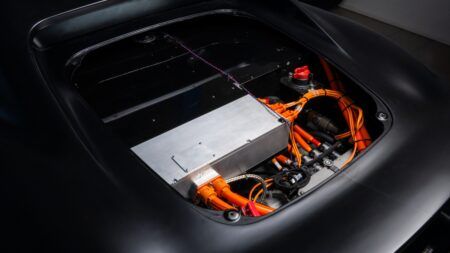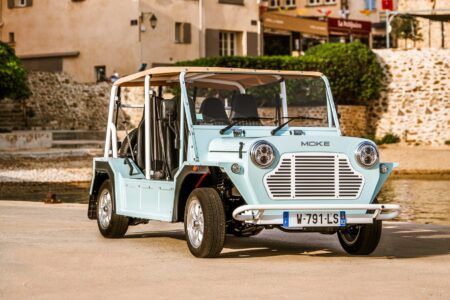The familiar sound of a noisy diesel double-decker bus on London’s streets is quickly becoming a thing of the past as new fully-electric models are being introduced. London’s fleet of 380 electric buses is one of the largest in Europe, and a further 37 battery-powered double-deckers have been rolled out with Siemens providing the charging facilities at their Westbourne Park depot.
In partnership with Tower Transit, a bus operator in London and part of the SeaLink Travel Group, Siemens Smart Infrastructure provided the charging infrastructure for 37 new fully-electric double-decker buses in London. Westbourne Park garage, on the Great Western Road, is the operator’s first depot in London incorporating fully electric routes with power infrastructure, maintenance and charging facilities.
At the refitted Westbourne Park garage, Siemens provided 34 AC and four DC Sicharge units (AC22 & UC200) supplying a total charging power of 2 megawatts. The Siemens infrastructure is sited on the 180-meter elevated bus deck extension that was built over railway lines as part of the Crossrail project in 2017. Buses are recharged primarily overnight or during operational breaks via the AC22s. The high-power UC200 DC charging-units provide fast charging; transferring power three times faster, compared to AC charging technology, so vehicles can be charged during shorter periods of parking time.
The volume of traffic in London makes it one of the most polluted places in the UK. The conversion of the Westbourne Park depot is part of the capital’s plans to deliver greener and cleaner transport for all Londoners. The Metrodecker electric vehicles (EVs) deployed by Tower Transit will save more than 1,800 tons in greenhouse gas emissions well-to-wheel in each year of operation versus a Euro VI bus.
As well as commissioning the installation, Siemens is providing a comprehensive preventative maintenance program and ongoing 24/7 service level support for the infrastructure. When electrifying depots there are a number of challenges to overcome: integrating with existing infrastructure, solving any grid or power demands and aligning the route and vehicle characteristics to support the most optimum vehicle and infrastructure solution.





